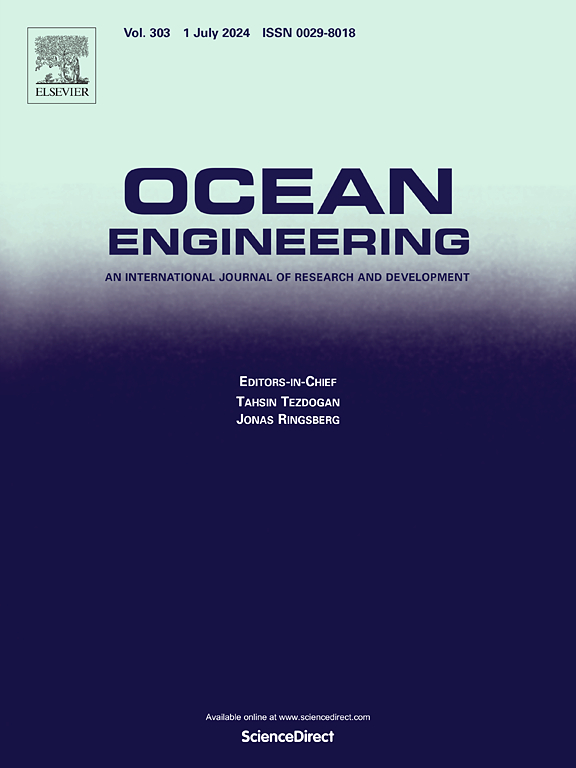Design methodology of a meta-cushion for reducing underwater noise during offshore pile hammering
IF 5.5
2区 工程技术
Q1 ENGINEERING, CIVIL
引用次数: 0
Abstract
The growth of offshore wind farms is accelerating to meet the renewable energy target by 2030, driving the development of larger offshore wind turbines (OWTs) to boost energy capacity. To support these OWTs, large monopiles are being installed by using impact hammers, which in turn emit low-frequency underwater noise, posing challenges for traditional noise mitigation systems and increasing risks to marine life. To address this, a metamaterial-based cushion (meta-cushion) was proposed, embedding resonators to filter longitudinal waves associated with high underwater noise levels. While prior work has demonstrated the meta-cushion’s noise attenuation potential, design guidelines are required for adaptation to various monopile installations. This paper introduces, for the first time, a design methodology for the meta-cushion, which based on the input parameters of the monopile system, it details the procedure for selecting the resonant elements contributing to the attenuation performance and their spatial arrangement on the cushion for enhancing mechanical performance. Such performance indicators are evaluated via finite element simulations and experimental modal analyses. The methodology concludes with a nondimensional study of the spiral resonator, which showed the best attenuation response in experiments, exploring its behavior under varying material and geometric parameters. This methodology enables the development of meta-cushions adaptable to monopile installations under any environmental conditions.
降低海上打桩时水下噪声的缓冲设计方法
为了到2030年实现可再生能源目标,海上风力发电场的增长正在加速,这推动了大型海上风力涡轮机(OWTs)的发展,以提高能源容量。为了支持这些水轮机,使用冲击锤安装了大型单桩,这些单桩会发出低频水下噪音,对传统的噪音缓解系统构成挑战,并增加了对海洋生物的风险。为了解决这个问题,提出了一种基于超材料的缓冲垫(meta-cushion),嵌入谐振器来过滤与高水下噪声水平相关的纵波。虽然先前的工作已经证明了元缓冲的噪声衰减潜力,但需要设计指南来适应各种单桩装置。本文首次介绍了一种基于单桩系统输入参数的元缓冲设计方法,详细介绍了影响衰减性能的谐振元件的选择和在缓冲层上的空间布置,以提高缓冲层的力学性能。这些性能指标通过有限元模拟和实验模态分析进行评估。该方法最后对螺旋谐振器进行了无因次研究,在实验中显示出最佳的衰减响应,探索了其在不同材料和几何参数下的行为。这种方法使开发适应任何环境条件下单桩装置的元缓冲垫成为可能。
本文章由计算机程序翻译,如有差异,请以英文原文为准。
求助全文
约1分钟内获得全文
求助全文
来源期刊

Ocean Engineering
工程技术-工程:大洋
CiteScore
7.30
自引率
34.00%
发文量
2379
审稿时长
8.1 months
期刊介绍:
Ocean Engineering provides a medium for the publication of original research and development work in the field of ocean engineering. Ocean Engineering seeks papers in the following topics.
 求助内容:
求助内容: 应助结果提醒方式:
应助结果提醒方式:


